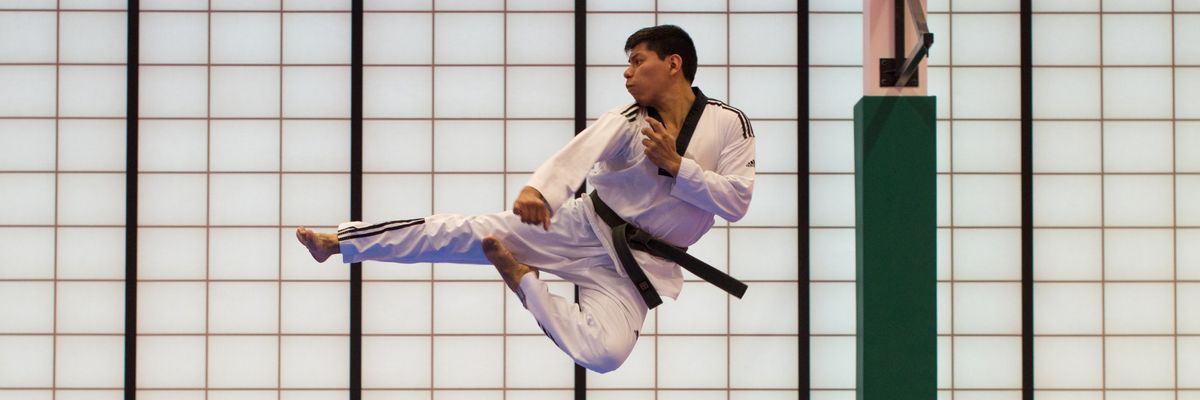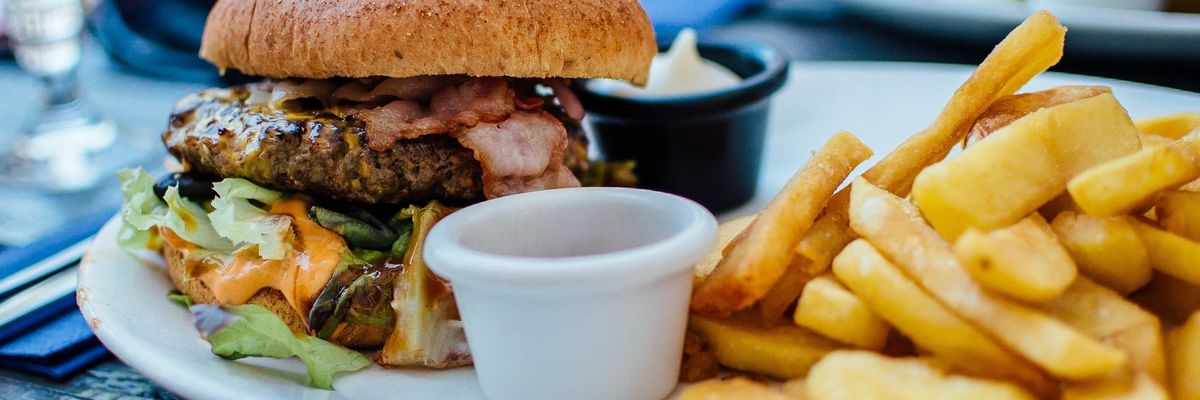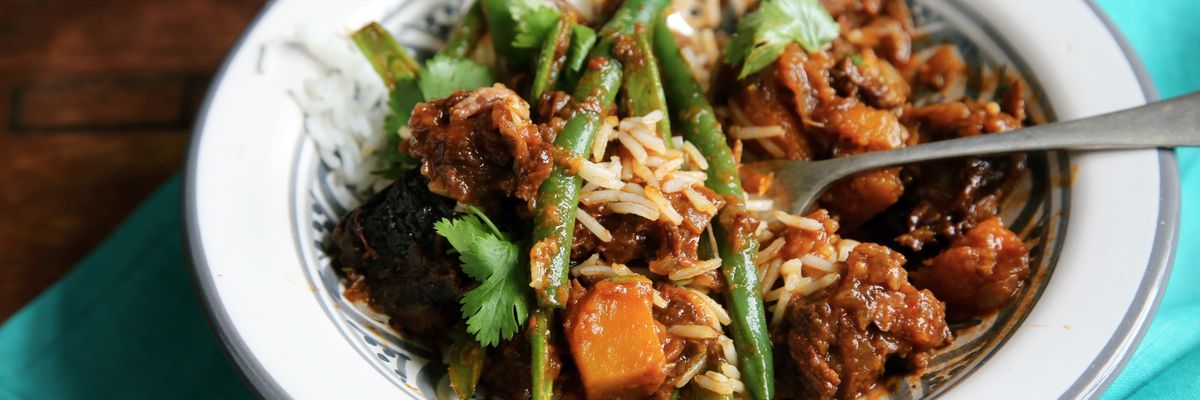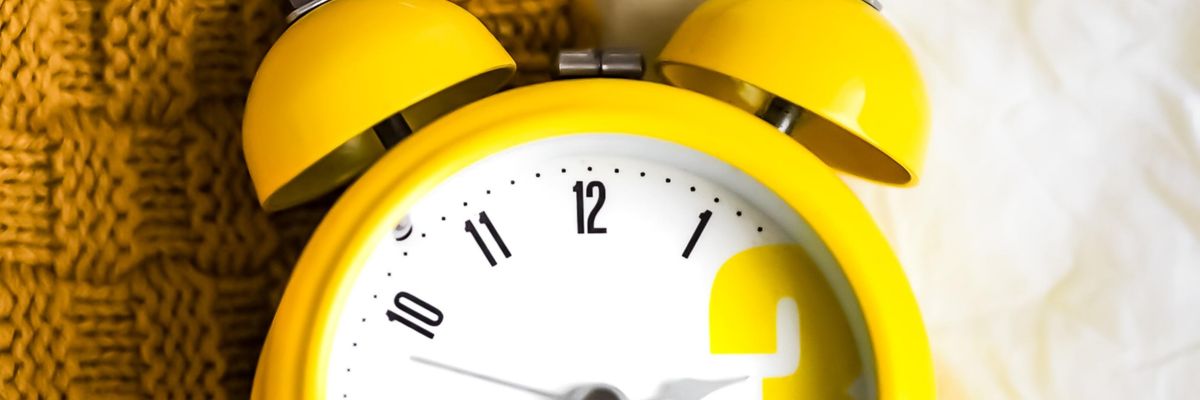Cooked food on black bowl
Athletes are inundated with information on how to train and recover; they don't need the added pressure of dietary information overload. Food choices affect performance, but too often we get caught up in looking for the magic bullet and honing in on specifics only to ignore the big picture.
The truth is, the majority of people seeking fitness gains benefit from backing off a bit and getting back to basics — for example: Consuming a routine diet that includes a variety of colorful, nutritious whole foods.
1. TRACK FOR ENERGY INTAKE

Man doing karate stunts on gym
Photo by Uriel Soberanes on UnsplashEnergy intake relative to exercise energy expenditure is known as energy availability. It could be tempting to up exercise without increasing the fuel to support the effort in order to get lean. However, too many athletes succumb to over-restriction and caloric deficits, which results in the body being forced to use lean tissue as fuel. Ultimately, this hinders performance and body composition.
Instead of micromanaging macronutrient breakdown, milligrams of a specific vitamin, or supplement intake, aim to have a daily balance of calories you consume versus burn. Ensuring your overall energy needs are being met is a huge game changer in how you feel and consequently how you perform.
2. REDUCE THE JUNK

Selective focus photography of burger patty, mayonnaise, and French fries served on platter
Photo by Robin Stickel on UnsplashAll foods can fit into an overall healthy diet, however, consuming foods low in nutrient density is like loading up on the 'junk miles' in your workouts. It's fuel, but it isn't making you any better. Aim to reduce the amount of low nutrient density foods consumed day to day. The best athletes indulge occasionally, but know 80% of their intake should be high-quality calories — Think: complex carbohydrates, plant proteins, omega and unsaturated fatty acids and colorful produce — to best fuel their health and performance needs. Skipping packaged foods is the best way to start eliminating poor quality foods.
3. BUILD YOUR PLATE

Meat with vegetable on plate
Photo by Caroline Attwood on UnsplashA great place to start simplifying your diet is to focus on balance, and the plate method is a great example of how to do this. Instead of measuring or weighing your food, you can use the plate's template to add protein, carbohydrates (grains or starchy vegetables) and produce, in the designated areas. This method focuses on balance — having different food types represented — and since each food type has its place, portion control comes naturally. It also provides some structure without being overbearing or restrictive. Start with a simple meal of grilled chicken, sweet potato and a salad drizzled with vinaigrette, before exploring more adventurous meals.
4. STICK TO A ROUTINE

Yellow and white alarm clock at 10 10
Photo by Laura Chouette on UnsplashMake day-to-day eating easy by sticking to a handful of high-quality meal or ingredient staples. Many professional and elite athletes eat the same meals and reach for the same snacks repeatedly. This helps reduce decision fatigue and stress, factors that increase low level inflammation and potential weight gain — the opposite of what most athletes want.
Make a list of three meals you fall back on for breakfast, lunch and dinner. Rotating the same few meals makes shopping and meal prep easy.
| Breakfast | Lunch | Dinner |
|---|---|---|
| Oatmeal with berries and yoghurt | Chopped chicken salad | Peanut tempeh with mixed vegetables and quinoa |
| Whole-grain toast with avocado and eggs | Bean burrito bowl | Steak with baked sweet potato and green beans |
| Tofu scramble burrito with fruit | Turkey and hummus on whole-grain bread with an apple and yoghurt | Salmon poke bowl with brown rice |
'Granholm You Are Killing Me': Climate Activists Disrupt Speech by Biden Energy Secretary
It all started with a pair of sweatpants. They were gray, shapeless, two sizes too large, with my company’s logo printed on the left hip—a gift given out at our 2019 holiday party. I couldn’t resist sinking into their cozy warmth every chance I got. After three months of enjoying them on weekend bodega runs, they became a much more permanent part of my wardrobe when the pandemic hit. With nowhere to go, I couldn’t muster up the energy to wear anything else.
My sleek leather pants and cool vintage Levi’s only reminded me of how life as we knew it was over.In the grand scheme of things, this was not a problem. I had my health, my family was safe, and I could easily work from home—it was a privilege to have enough time and energy to even briefly think about clothing. But by April 1, 20 whole days into my quarantine, it felt like I’d been wearing sweats forever. That’s when I had an idea.
I’m a novelist, and at that point, I was 60 pages into writing a murder mystery. I abandoned that project—it was too depressing—and cast around for another topic. Sick of my aforementioned sweatpants, I wanted to dive into a glamorous world. I imagined my new protagonist would be a fashion stylist. (This was truly the very first character detail I came up with.) I missed live music and all the other fun New York City has to offer, so I decided her love interest would be a musician, and they’d have date nights at all my favorite restaurants and bars. I craved travel, so there’d be chapters set in Portland and Miami. Most of all, I wanted to hug my grandparents, so I dreamed up a fabulous matriarch. Two years later, that book hit shelves. It’s called Meant to Be Mine, and it’s about a woman who knows the exact day she’ll meet the love of her life, thanks to a prophecy from her eccentric grandmother.
One of my favorite parts of writing the book was constructing a fictionalized version of New York’s fashion industry. I knew the subject fairly well, thanks to years of interning for fashion magazines and a womenswear designer, as well as reporting on fashion week. I’ve spent my entire career as a writer and editor for lifestyle publications in the city—so while I’m not a fashion industry insider, I’m pretty adjacent. Still, I wanted to learn more, so I started my research.
To flesh out stylist Edie Meyer’s world, first I called Audree Kate López, a stylist living in Manhattan, to get the scoop on what her career looks like behind the scenes. We had crossed paths early on in our careers when I was at Seventeen and she was at Redbook. I’ve been a fan of her work ever since. She has such a knack for styling vibrant, fresh, very New York looks that embody the energy I wanted readers to feel while reading my book.
She told me about the time she styled a pop star with such long, unwieldy nails, she couldn’t put on her own underwear. She talked about a gig styling a rapper who insisted on having lobsters delivered to the set of his photoshoot. Off-camera, López cringed as lobster juice dripped all over the expensive pants she was wearing. I couldn’t resist putting both of those stories in the book. She also considered descriptions of my characters and recommended brands they should wear. (For Edie herself, vintage Versace and Valentino from her grandmother’s closet paired with chunky Lulu Frost jewelry.)
I also used my own experiences in magazines as inspiration. Pre-2020, I went to lots of press previews, which strike me as such a quirky element of the industry. The guests were often familiar to me—typically people who held my same job title at other publications. I could count on there being copious amounts of wine and cheese, and I was always tickled by the unusual perks publicists offered to get busy writers and editors in the door. (I’ve received everything from a dance class led by the Rockettes to Beyoncé tickets.)
In Meant to Be Mine, Edie goes to a press preview and air-kisses the guests she knows: fashion editors, Bachelor contestants-turned-influencers, and “Frank, who does not work in fashion (or seem to work at all), and yet somehow makes an appearance at more industry parties than any of us.” (Don’t we all know a Frank?) She enjoys the brand’s signature cocktail, and after viewing the clothes, listens to a “fireside chat by a renowned career coach,” because what else would a brand specializing in great suits do?
The Great Report
2020 Global Report Sheet
Welcome to the start of the tiktok world..
Gingersvibe
@grow_with_gingersvibe Replying to @always_nana0 #gingersvibe
If there's anything that cutting our own hair in quarantine taught us, it's that we're always up for new adventures. As the trees start shifting from green leaves to red, orange, and yellow, the transition between seasons makes us want to change our hair color, too! Summer hair is all about electric color while winter has a bit of edge, and fall hair is the perfect in-between. A little bit bold, a little bit cozy, and very chic, these hair trends will last you until way past Thanksgiving.
Warm copper is a great color for fall that goes with every hair texture and cut. Tones of deep brown or amber keep it from being pumpkin orange. Focus on keeping your hair moisturized to let the color really shine.
Focus on keeping your hair moisturized to let the color really shine. Focus on keeping your hair moisturized to let the color really shine.
Incorporate highlights to lighten the overall look and provide some dimension. This is also a great way to bring summer to your fall hair.
 brown tabby cat on white stairsPhoto by
brown tabby cat on white stairsPhoto by 

 women running on race track during daytime
Photo by
women running on race track during daytime
Photo by  Photo by
Photo by 


